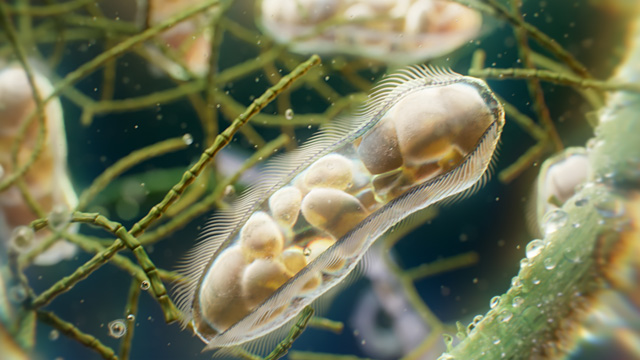A view of paramecia spiraling their way about in a freshwater pond.
In this sequence, we get a close-up look at one of these unicellular microorganisms as it makes its way around using the tiny hair-like cilia on its outer surface. Arranged in longitudinal rows, there are around 4,000 of these motile cilia on its surface, beating in waves to ensure movement and feeding.
In addition to other organelles, we can see several vacuoles inside, digesting organisms such as bacteria and yeasts.
The paramecium was among the first single-celled organisms to be observed under the microscope.
In order to capture the emergent behavior and movement of this microworld, the definitive goal here was to create a natural environment using physics simulations and a procedural pipeline instead of hand-keyed animation.

